Forge a kitchen knife
Another attempt to forge a knife. The metal I use for this project is part of a feather harrow that I collected from my father farm.
I cut out a ~8x4cm long piece from the springs of the feather harrow:
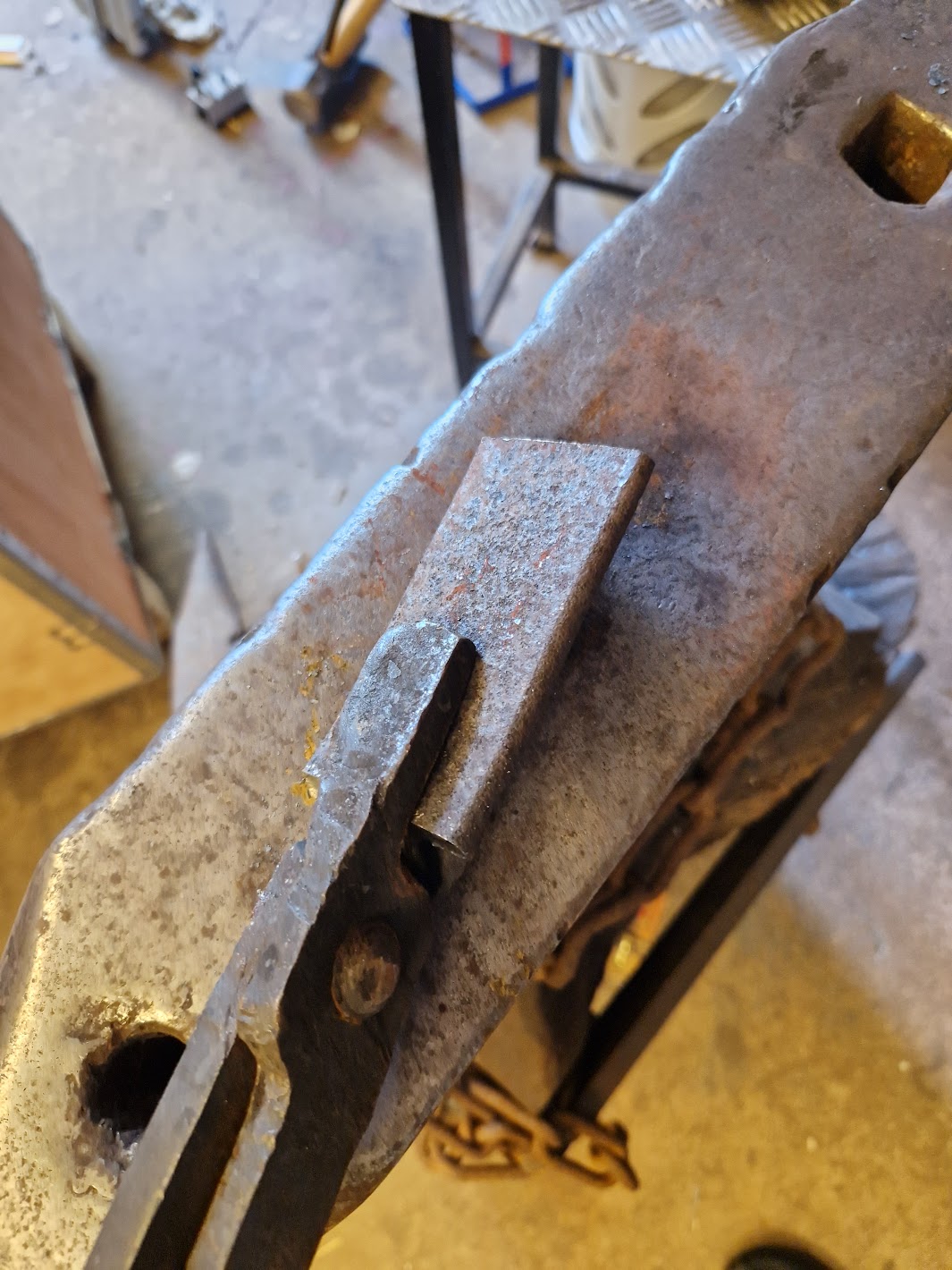
Bosse (the dog) never leaves me, so I got him a sack to snuggle down on at the outside of the garage.
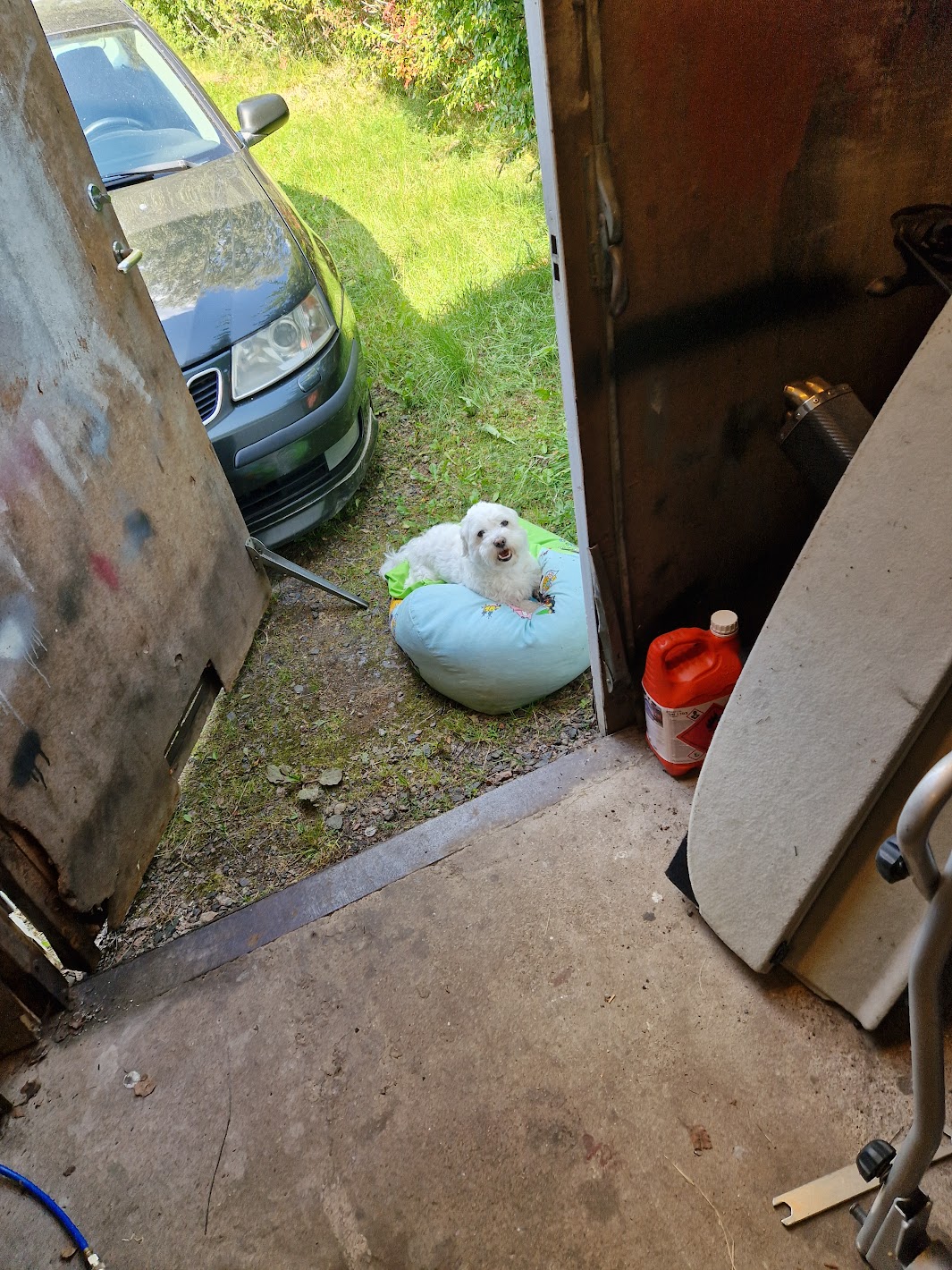
I used the gas forge for the entire project. It is actually pretty good for knife making.
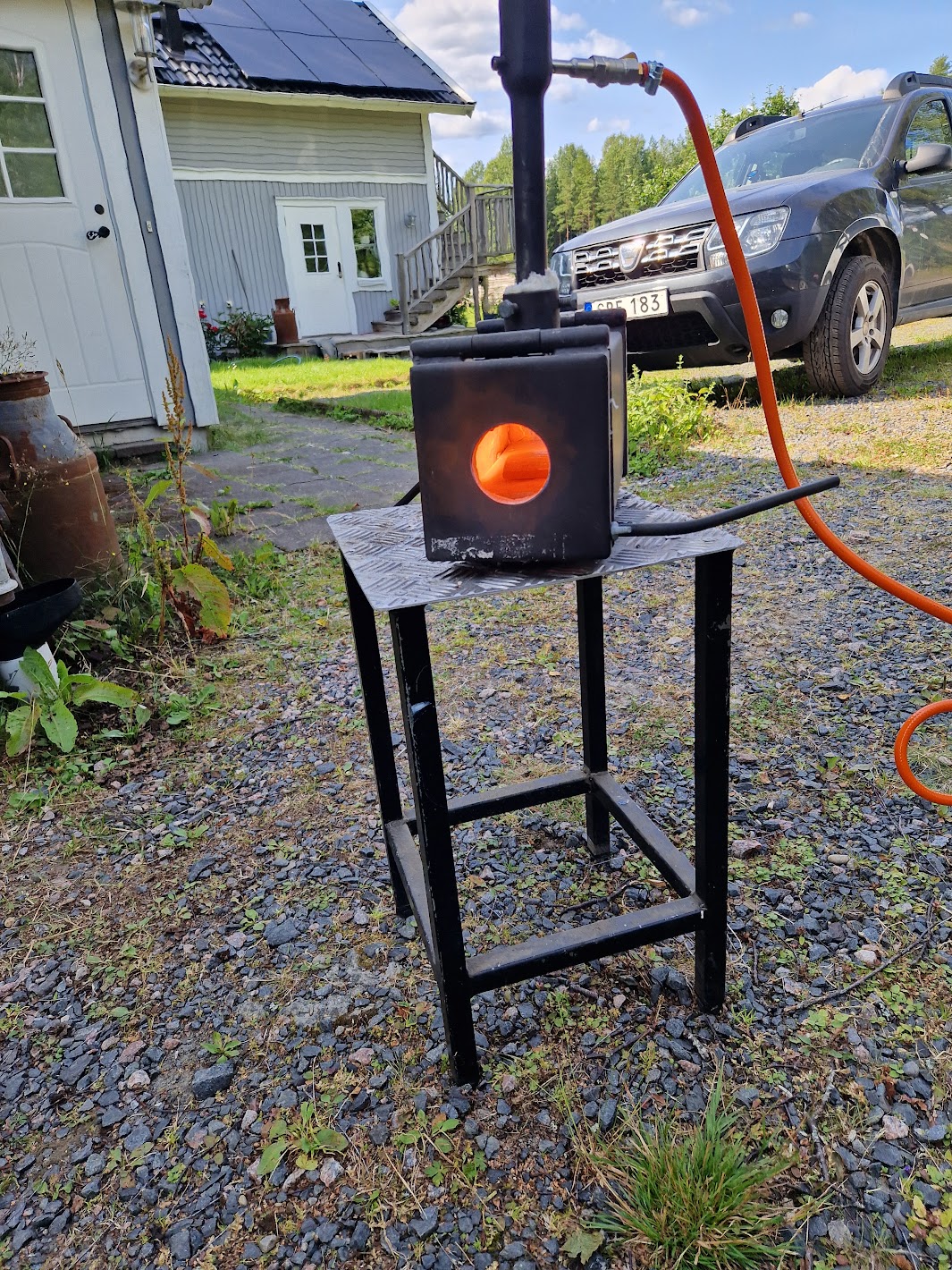
It took a lot of hammering, but now I have doubled its length to approx 16cm and started to shape the tang.

This is how I imagine the shape of the final blade. So I started to hammer towards that shape.
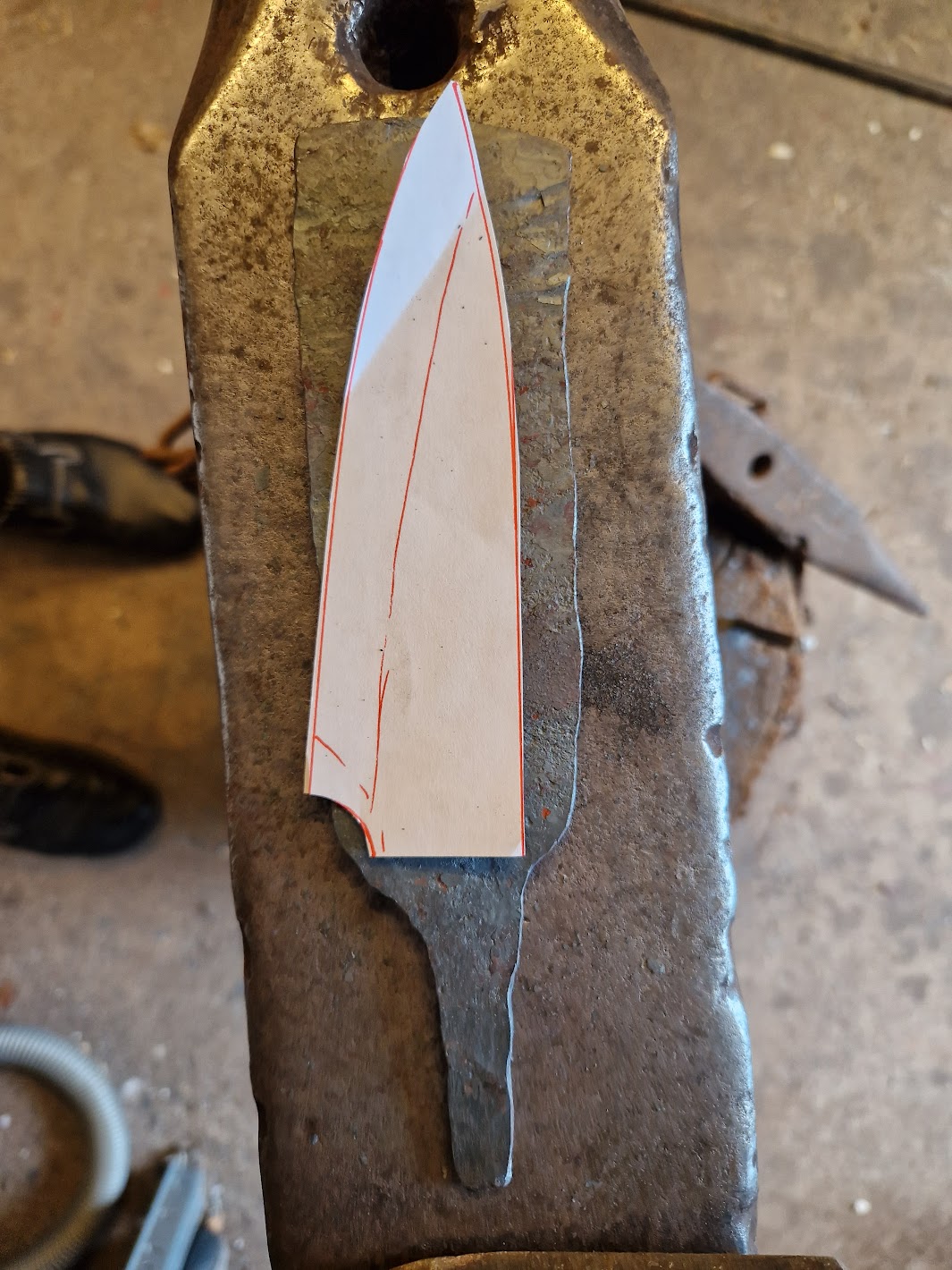
After a lot of more hammering and then grinding, it is time to normalize the steel. This is necessary to avoid blade warping or cracking during the quenching. I used the induction forge to heat it up to ~800 degrees celcius. The temperature can be checked with a simple magnet as steel loses its magnetic ability around 800 degrees celsius.
I do this several times and let the blade cool down slowly in a can with ash.
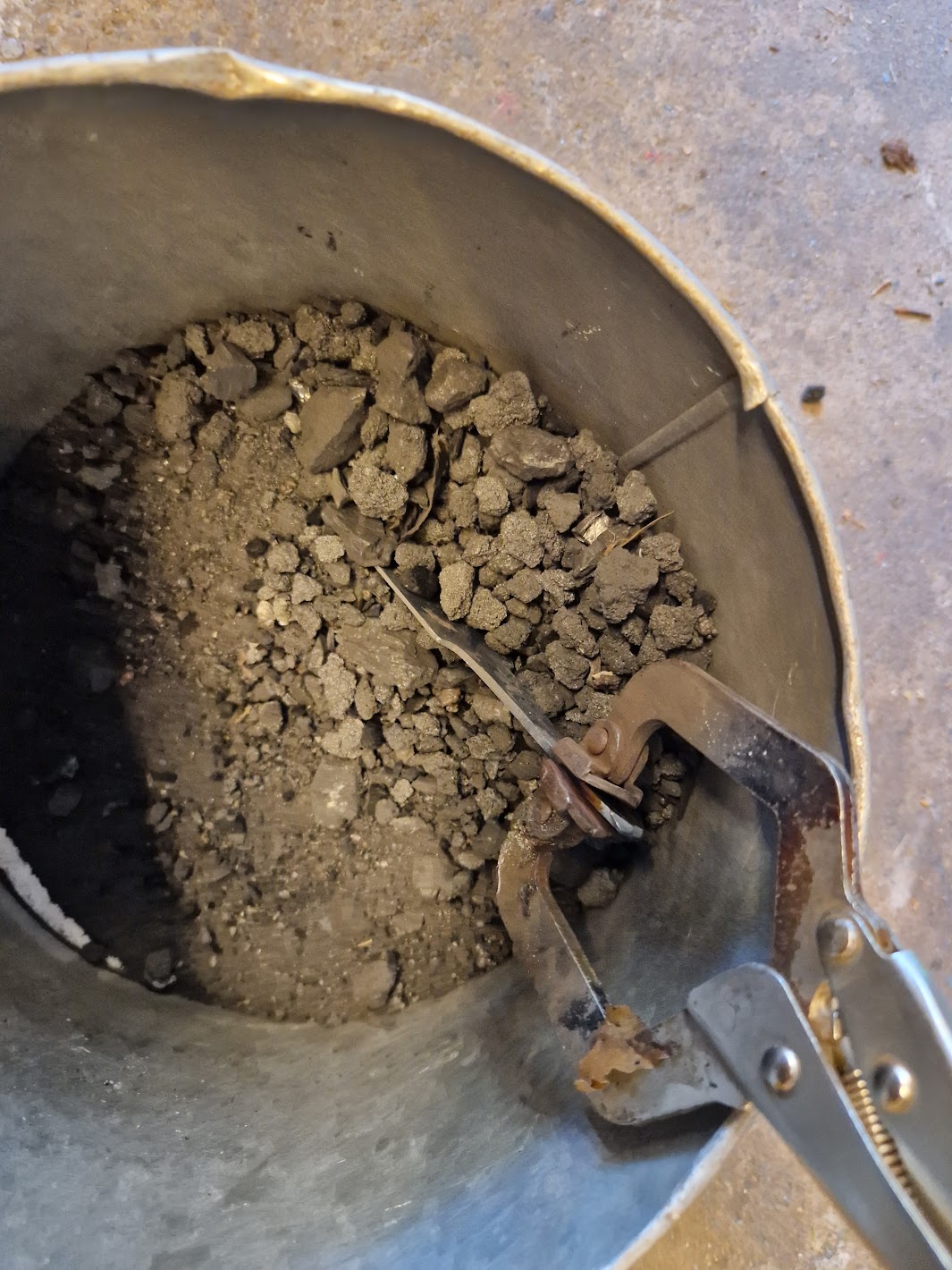
After that it is time to hardening the blade. I use the gas forge and heat it up to ~900 degrees and quickly plunge the steel into a can of preheated peanut oil. I preheated the oil by heat up a piece of rebar which I stired into the oil.
I actually expected the blade to crack during the quenching as I made to edge so thin (~1.5mm). But it did not.
I checked the hardeness with a file. Take the file and scrape its corner across the steel. If the blade resist scratching, the blade is harder that then file and the quenching was succesful.
Now the blade is extremely brittle and needs to be tempered to soften a bit and relieve build-up stresses.
I use the oven for this. I let the knife sit in the oven for 2x1 hours @ 200 degrees celcius. Let it cool to room temperature between each hour.
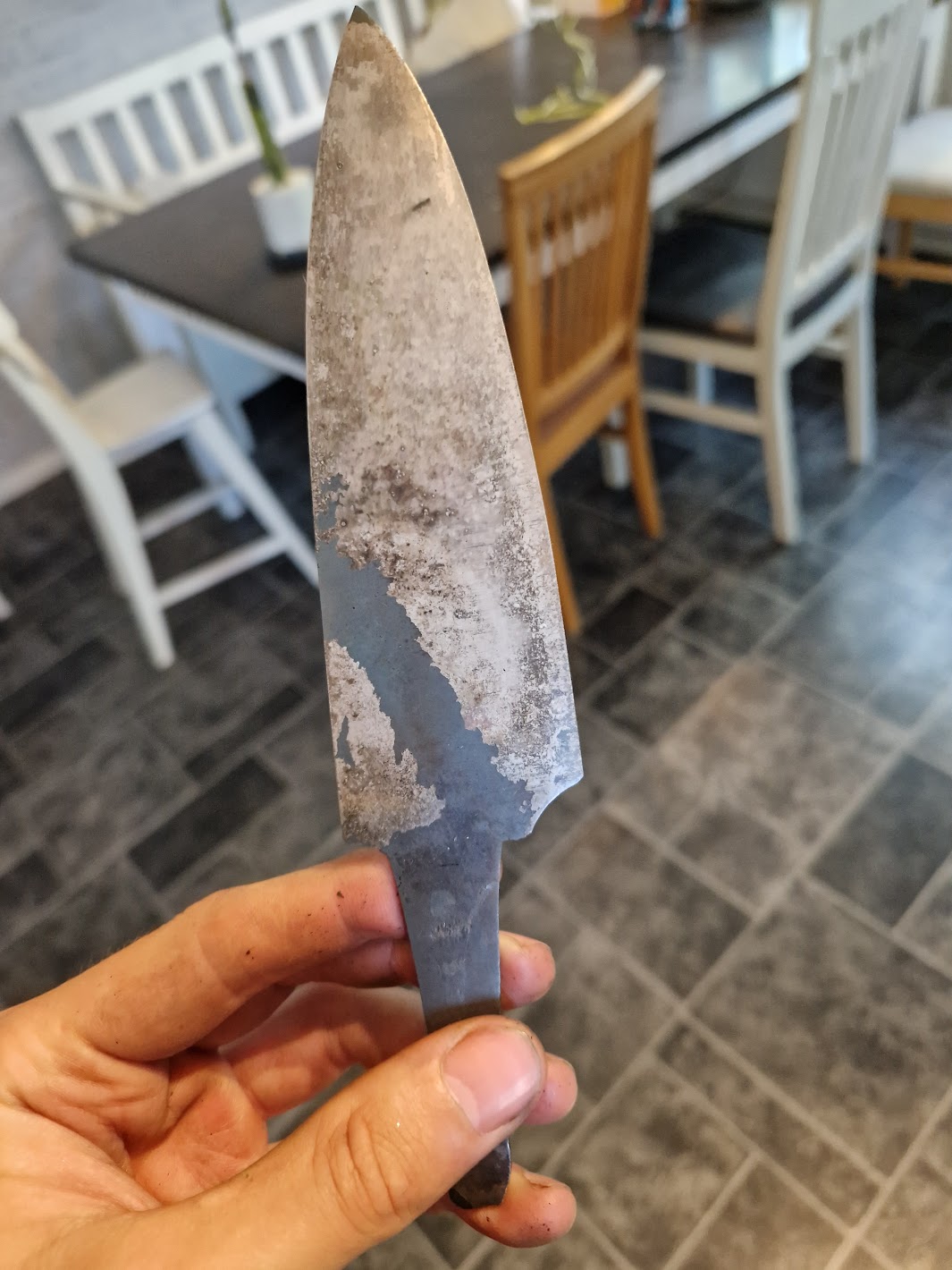
The result
The handle was made in three layers as the last time [1]. I used walnut with birch in the middle. I decided to not polish the blade but keep the blackish tone. I think it looks nice with the dark walnut.
The blade is sharpened with a 20 degree edge angle and cuts very well. I think the blade is really hard, it took long time to grind the edge even if the blade is rather thin.
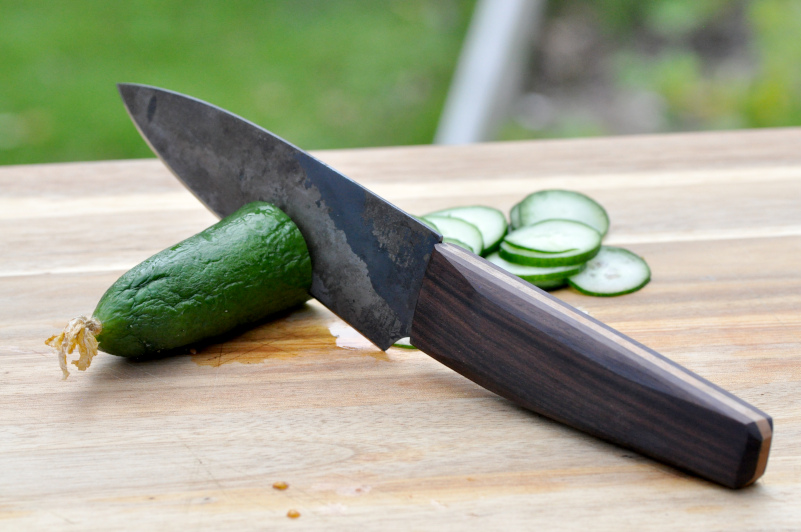
Overall I'm good with the result. There are a few things to improve for the next time though.
- I want the tang to be more on the upper side of the blade so the handle can be made thinner.
- I was trying to grind a secondary edge but messed up completely. So this knife came out with the primary edge only..
- I don't think I will grind the whole blade the next time. A hand forged knife should look more hand forged.